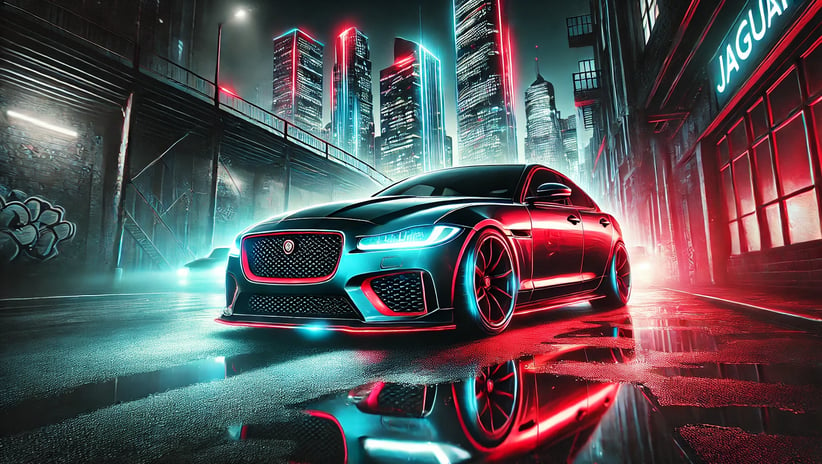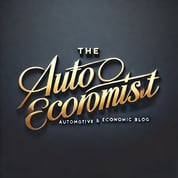Jaguar Just Won the Marketing Super Bowl—Without Even Trying
Jaguar just played the marketing game like pros and walked away with the jackpot. While critics scream 'woke,' Jaguar became the most talked-about car brand in America without spending Super Bowl money. This isn’t a Bud Light-style blunder—this is a masterclass in earned media. They didn’t lose customers; they gained relevance. Critics weren’t buying Jaguars anyway, but now millions are Googling the brand, visiting their site, and seeing what the fuss is about. Jaguar didn’t just survive—they won.
Folks, let’s clear the air here: Jaguar didn’t just roll out a controversial ad—they played the media like a fiddle, and it worked brilliantly. While the armchair critics are screaming “woke” and clutching their pearls, Jaguar is quietly counting their winnings. Why? Because in the last 30 days, Jaguar became the most talked-about automotive brand in America. And the kicker? They didn’t spend a dime on a Super Bowl ad to do it.
Let’s talk about how they pulled this off and what it teaches us about the power of earned media versus paid media.
The Media Game: Paid vs. Earned
Every major brand relies on two types of media to stay relevant:
Paid Media: This is what brands shell out big bucks for—TV spots, online ads, influencer partnerships. Think Lexus or Mercedes-Benz flooding prime-time TV with slick commercials showing their cars gliding through scenic landscapes. It’s expensive, predictable, and usually effective for maintaining dominance.
Earned Media: This is the holy grail of marketing. It’s the attention you don’t pay for. Think viral conversations, news coverage, and social media debates. You can’t buy it directly—it has to be sparked, often through a bold move.
Jaguar didn’t just spark earned media; they ignited a wildfire. By launching an ad campaign that some called “woke” and others labeled as avant-garde, they achieved something brands like Lexus and BMW could only dream of—organic, widespread attention.
The Critics Missed the Mark
Let’s talk about the backlash. Critics called Jaguar’s ad “woke.” Some said it was too artsy, too avant-garde, too out of touch. But here’s the thing—Jaguar isn’t trying to be Lexus. They’re not trying to sell SUVs to every suburban driveway in America. They’re not a mass-market brand, and they never will be.
Jaguar’s ad didn’t feature cars. Instead, it leaned into high fashion, bold colors, and an aesthetic that screamed exclusivity. You don’t have to like it. Hell, you’re not supposed to like it if you’re driving a Toyota Camry and clipping grocery coupons.
The people saying, “I’ll never buy a Jaguar!” weren’t buying one anyway. And that’s the genius of it. Jaguar doesn’t need you. They’re not selling minivans to soccer moms—they’re selling an idea, an identity, a luxury niche.
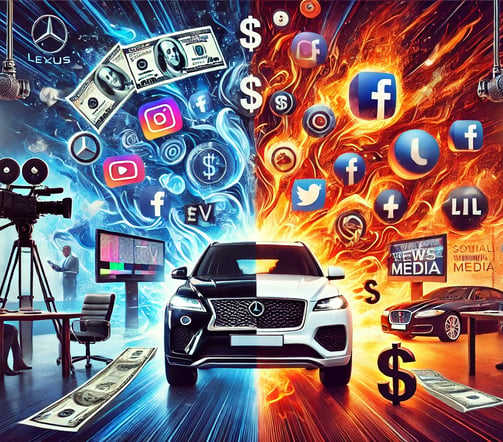

What Bud Light Did Wrong That Jaguar Got Right
Here’s the key difference: Bud Light was a mass-market brand with a massive share. When they partnered with Dylan Mulvaney, they alienated a core part of their existing customer base. Their mistake wasn’t the campaign itself—it was failing to understand the stakes for a mass-market leader.
Jaguar? They had no share to lose. Let’s face it—most people weren’t buying Jaguars before this campaign. If you hated the ad and swore you’d never buy a Jaguar, let’s be real: You weren’t buying one anyway.
Bud Light’s backlash cost them billions in sales because they were already in everyone’s fridge. Jaguar? They were in no one’s driveway. The criticism and conversation only helped them by putting their name back in the game.


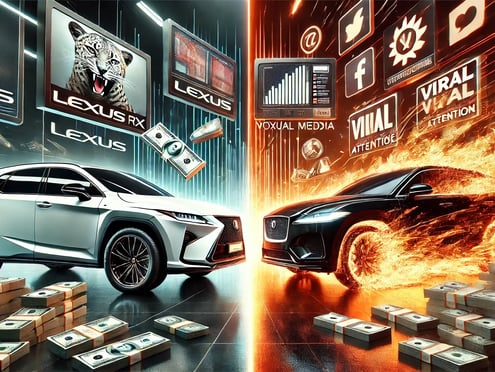

Jaguar’s Earned Media Jackpot
This is what people don’t understand: Jaguar just got a windfall of earned media that would’ve cost tens of millions in paid campaigns.
National News: Every outlet, from CNN to Fox News, covered the campaign. That’s millions in free advertising.
Social Media Chatter: Endless debates on Twitter (or X), Instagram, and Reddit. People who hadn’t thought about Jaguar in years suddenly knew the brand existed.
Website Traffic: Imagine 10 million new visitors to Jaguar’s site. If just 1% of them seriously consider buying a car, that’s 100,000 potential customers—without spending a dime on traditional ads.
Jaguar’s marketing team is probably presenting these metrics to Tata Motors (their parent company) with champagne in hand, showing them how much money they saved by letting the controversy drive the conversation.
Jaguar Isn’t Mass Market—And That’s Their Strength
Here’s another thing critics don’t get: Jaguar is a niche luxury brand. They’re not trying to be the next Lexus RX or BMW X5. Their audience is different. It’s smaller, more exclusive, and more design-forward.
Their recent campaign, avant-garde as it may be, fits that ethos perfectly. It’s edgy. It’s bold. It’s not trying to please everyone. The same people who roll their eyes at Jaguar’s pink concept car are the ones who hated the Porsche Panamera or the Mercedes G-Wagon when they launched. Those cars weren’t designed to appeal to everyone—they were made to stand out.
Jaguar doesn’t need mass-market appeal. They need exclusivity, intrigue, and the kind of attention that gets people talking. And boy, did they get people talking.
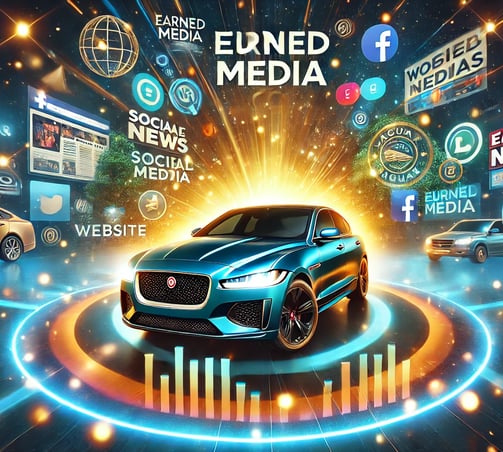

Tata Motors: Why They’re Smiling
Let’s talk about Tata Motors, Jaguar’s parent company. Do you see them rushing to defend the campaign? Do you see them panicking? No, because they understand the game.
Tata isn’t upset because they know this is how you relaunch a brand in today’s market. Jaguar just became the most talked-about car brand in America. That’s what they needed.
And here’s the kicker: Tata doesn’t have to spend another cent. The earned media is already rolling in. Jaguar is back in the conversation, and now all they have to do is wait for the dust to settle and launch the new lineup.


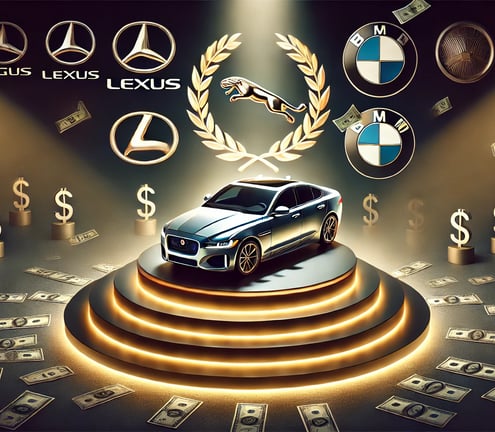

The Bottom Line: Jaguar Won—End of Story
If you’re still criticizing Jaguar’s campaign, you’re missing the point. This wasn’t about pleasing everyone—it was about making a statement. It was about generating attention, sparking conversation, and putting the brand back on the map.
And they did it without spending Super Bowl money.
Jaguar didn’t lose anything here. They gained awareness, web traffic, and, most importantly, relevance. In the world of niche luxury brands, that’s the real win.
So here’s the bottom line: Jaguar isn’t Bud Light. They didn’t have mass-market dominance to risk. They had nothing to lose and everything to gain. And they gained it—big time.
While Lexus and BMW are spending millions to maintain their share, Jaguar just became the most talked-about brand in America for a fraction of the cost.
Say what you will about their campaign, but Jaguar won. And they did it their way.
